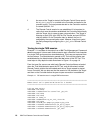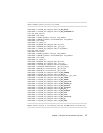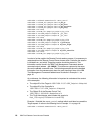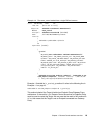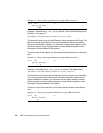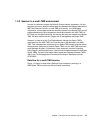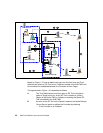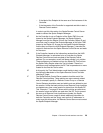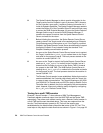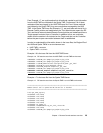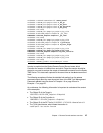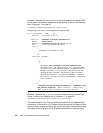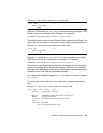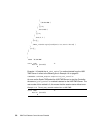24 IBM Tivoli Remote Control Across Firewalls
H The Spoke Endpoint Manager is able to provide information for the
Target machine as this Endpoint is part of the same TMR. However,
for the Controller, once again, it could not find any information for it
inside its Endpoint Database. The Spoke Endpoint Manager needs to
extract the Region ID of the Controller Object ID and must find a way
to contact the HUB Endpoint Manager. As soon the Spoke Endpoint
Manager find the way to contact the HUB Endpoint Manager, it
transfers the request it receives from the Spoke Remote Control
Server and waits for the return.
I Before initiating the connection, the Spoke Remote Control Server
needs to know if the Target needs to be reached using an Endpoint
Proxy/Gateway proxy infrastructure or not. If the Target is a proxied
Endpoint, the Spoke Remote Control Server should send the request
through an Endpoint Proxy instead of using the standard Tivoli
Endpoint Gateway communication process.
J As soon as the Spoke Remote Control Server knows how to contact
the Target, it sends the nd_start_target method down to the Target
and waits for the process to starts. The local process started on the
machine is named EQNRCMAI.EXE.
K As soon as the Target is started, the Spoke Remote Control Server
sends an nd_start_controller method to the Controller, but as it
knows that the Controller is not part of the Spoke TMR, it forwards
the request to the HUB TMR. The HUB Remote Control Server is
sending the nd_start_controller method to the Controller and waits
for the process to start. The local process started on the machine is
named EQNRSMAI.EXE.
L The Remote Control session is now established. Notice that once the
session established, the Controller talks directly with the Target; this
is a peer-to-peer communication. The Target is listening on port 2501
(port 2502 for File Transfer and port 2503 for chat) by default. On the
Controller side, by default, the port is assigned by the communication
stack. However, these ports could be easily changed by configuring
the rc_def_ports Remote Control Policy.
Tracing for a multi-TMR session
Example 1-6 and Example 1-7 show subsets of IBM Tivoli Management
Framework odstat command output from the HUB TMR and the Spoke TMR
respectively. They show each method used to start a Remote Control session in
a multi-TMR environment described above. This trace was captured from the
time the Tivoli Administrator opened an RC Tool until the session was
established after the Administrator clicked the Run button of this RC Tool. This
trace helps to fully depict the data flow that was shown in Figure 1-3 on page 22.



